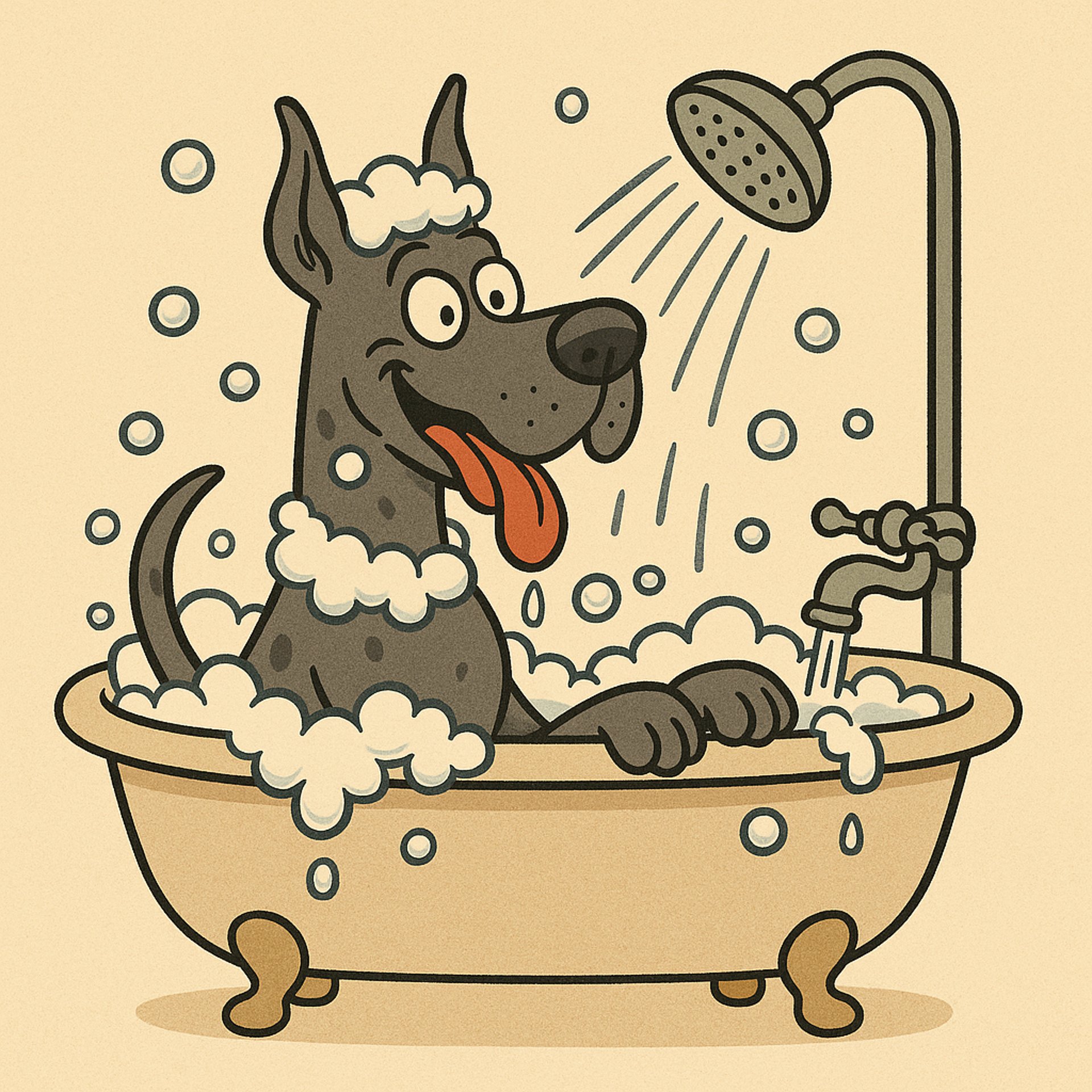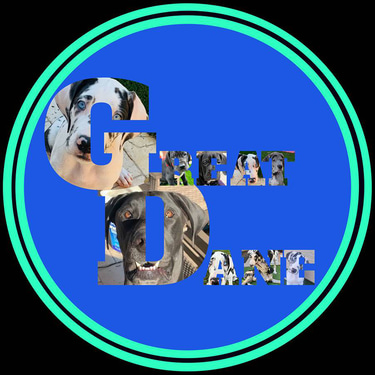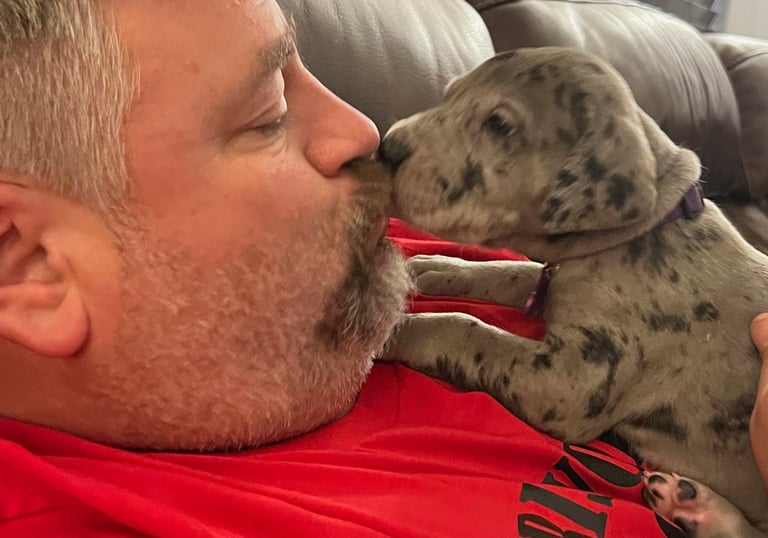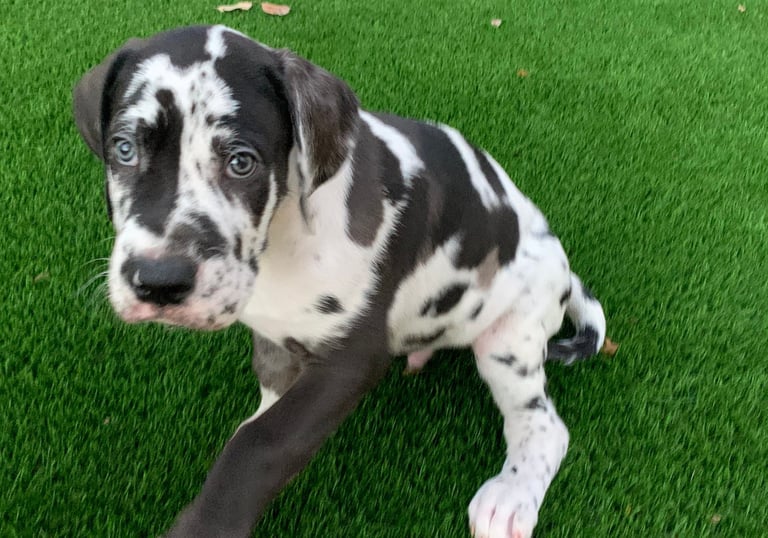Essential Great Dane Care Tips & Advice
Discover essential care tips for Great Danes, including training, feeding, and play. This blog provides valuable insights for new and prospective owners to build a loving relationship with their dogs. Explore our resources and product recommendations for the best care of your Great Dane.
Training Resources
Find valuable resources and recommendations for training your Great Dane effectively and building strong bonds.
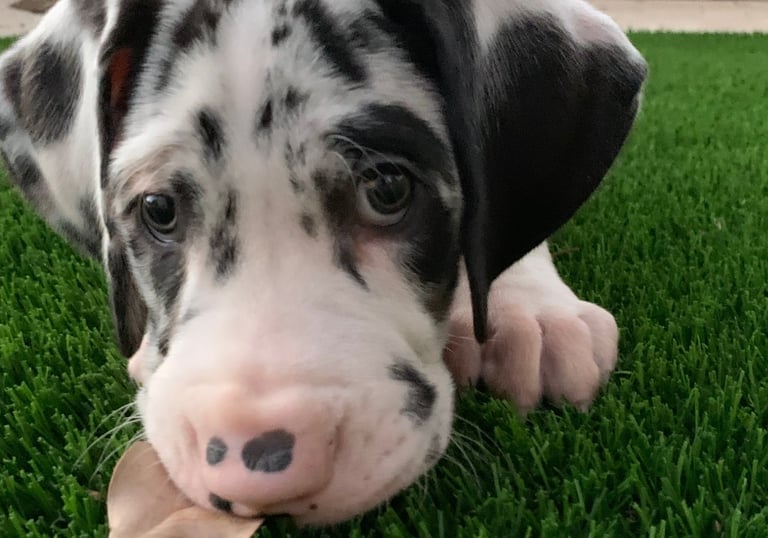

Great Dane Feeding Recommendations
Great Dane Puppy Care Tips
Great Danes thrive on a high-quality diet tailored for large breeds. Feed a balanced commercial formula (puppy food until ~18 months) to support healthy growth. Provide multiple small meals each day (e.g. 3–4 per day for puppies, 2+ for adults) rather than one large meal to reduce bloat risk. Using a slow-feeder bowl can discourage fast gulping, and avoid exercise 1–2 hours before and after meals. Keep treats limited (≤10% of daily calories) to prevent excess weight, which strains joints.
Early, consistent training helps build a well-mannered Dane. Socializing a Great Dane puppy in the first few months by exposing it to different people, pets, and environments reduces anxiety and timidity later. Puppy classes or basic obedience training reinforce commands and etiquette; always use gentle positive reinforcement (treats and praise) rather than harsh discipline. Large breeds often benefit from crate training: a sturdy crate can serve as a safe “den,” speeding housebreaking by leveraging the dog’s instinct to keep its sleeping area clean. Patience and consistency are key, as these giants respond best to calm, reward-based leadership.
Great Danes may appear lazy, but they still need regular exercise. Aim for at least two moderate walks per day (20–30 minutes each) to provide sufficient activity. These gentle giants enjoy playtime and can adapt to apartment living if well-exercised, but they benefit most from having a yard or open space to stretch and roam. Avoid overly strenuous or high-impact workouts (especially in hot weather) to protect growing joints and heart health. Mental exercise is also important: obedience games and puzzle toys keep their minds sharp and help prevent boredom.
Because Great Danes have powerful jaws, choose toys built to last. Durable, large-sized chew toys (for example, tough rubber KONGs or heavy-duty nylon bones) withstand vigorous chewing and satisfy natural urges. Puzzle feeders or treat-dispensing toys provide mental enrichment and can slow down eating, which is beneficial for large breeds. Soft plush toys can be comforting, but opt for reinforced versions made for strong chewers. Rotate toys regularly and offer safe chew items during puppy teething. Useful training aids include a clicker or high-value treats to reward good behavior during lessons.
Great Danes are typically gentle and affectionate companions when handled kindly. They often do well with children when socialized early. Establishing a consistent routine for feeding, exercise, and training helps build trust and reduce anxiety. Groom regularly (weekly brushing and occasional baths) to manage shedding and strengthen the bond. Consider an orthopedic dog bed to support aging joints. Ultimately, patience, positive reinforcement, and plenty of love will help a Great Dane grow into a confident, loyal family member.
Sources: Authoritative breed care guides and veterinary resources.
A Brief Read
Great Dane Tips
This is the most important tip section of all the tips. Great Danes are the most finicky when it comes to eating. Not only do they have sensitive stomachs, they also can be very stubborn when it comes to eating. One of the first items one must have is an elevated food bowl If it weren't expensive enough! This is a good one to help with the splashing and the mess. Keyword "HELP," OHHH there's gonna be a mess still! These guys cannot eat or drink over their bowls, they have to drink (sometimes sticking their entire snout in the water) and walk away while licking or shaking their heads. This is so the freaking water gets EVERYWHERE!!! They will take bites of food and move away from the bowl as well! Don't get me started if you have multiple Great Danes, they will switch and try every bowl and drag food everywhere while doing it. They are very inconsiderate that way.
Next, These guys get the "bad poos" pretty often. Something I like to do is add a little pumpkin and add it to their food. Just a couple table spoons on top. I will especially do this regularly for growing puppies. Speaking of growing puppies I like to add vegetables to their food. This helps with growth and learning to eat at feeding time. Plus, it adds to the Giant Mess!
Next, Something else to keep on hand when these guys get the bad poos, is rice. I generally get a big bag of the long grained rice, I will add Chicken or Beef Broth to the rice when I boiling it. This will add a little flavor and a little odor to the rice. When puppies are just beginning to eat real food, I will add broth to their food to help soften the food.
Next, When I used to spoil my Danes, I would buy boneless chicken breasts cook them in the pressure cooker, remove the chicken, and cook the rice in the broth. Shred the chicken, add it to the rice, and then add vegetables. Seal off a bunch of little packages of food to mix with each meal. This is gets very expensive if you have multiple Great Danes. This does help when they are not eating well. Sometimes these guys can't eat dog food at all, and this is required.
Next, Probiotics helps with their digestion. My mom swears by this stuff. Her Dane got the Parvovirus at 10 weeks and nearly died. I spent several nights forcing Activia (adult supplemental drink) and water into his mouth to keep him alive. Once he was clear of the virus, she would split a serving of into two meals a day. Max is now one of the bigger Great Danes in my photos.
Feeding
This is something I use. It is a little pouch that comes with a clicker and you can put treats in it. When I am working with one of my Danes I throw this over my shoulder and I can click and give them a treat. I have a link to the treats I use. The reason I use these treats is they can be broken into smaller bites so they last for a long time, and they have a beefy odor. The dogs love these!!
Training
While getting the big heavy duty chew toys and or bones, most of the time they do not want to chew on them. They really prefer something softer. You can get certain chew toys and add things like peanut butter or cheese, but the toy needs to be cleaned regularly and reloaded. All of my Danes have preferred the toys I have added links too. They especially love it when you are playing with them. If you have more than one dog, having toys with multiple bite points is nice. These dogs need attention, so when one getting attention the others will want to join in.
Chew Toys
One thing to remember about Great Danes, they LOVE attention. When left alone they can be very destructive and especially at night. If you play music while they are resting at night, or home alone, they feel a little more at ease. If there is a T.V. in the room, or any type of speaker or radio can help soothe their nerves. These are nice to have around and serve many purposes.
White Noise
I like to use a couple different types of treats. I will use the "Minties" once a day, to help keep teeth clean. I "subscribe and save" these on Amazon. When I leave for work, I put the dogs in their kennel, I give them each 1 as a reward for going in the kennel. This makes them excited to go into the kennel and they run directly to the kennel when they come in before work.
Next, I will use the "Pup-peroni" for training. These I break into small little bits and put them in my pouch so I can reward them when they respond correctly.
Next, My clan likes "Softies" "just because" treats. These are just a little fun treat I give them from time-to-time.
Next, I like to give them "Busy Bones" when they sleep in their crate at night. This is a reward for getting into the crate or kennel for the night. This treat kind of keeps them busy for a little while before they go to sleep. This especially helps when they are beginning "crate training." A lot of times when they are young and get locked up, they will cry and whimper. This gives them something to chew on for awhile not realizing it's bedtime. I've used pig ears as well, but they can be a little sharp and messy.
Next, If your dog or pup does not take well to the crate or kennel these calming help. These have to be used regularly to get the most out of them. If you just give them one every now and then, they don't seem to work as well.
Treats
